UGEARS
Aero Watch
Aero Watch
Regular price
€48,05 EUR
Regular price
€84,90 EUR
Sale price
€48,05 EUR
Unit price
per
Tax included.
Shipping calculated at checkout.
Couldn't load pickup availability
The time has come! For years, we have heard the same question over and over again from our loyal customers: “Can Ugears make a working clock, one that actually keeps accurate time?” Your dream has also been our dream, and our team of engineers and designers has been working hard to make this shared dream a reality. Finally, the wait is over. Ugears is proud to present the Aero Clock, a fully functional DIY wall clock with pendulum.
This simple yet elegant Ugears clock is powered by gravity pulling down a weighted bag (you can fill the bag with sand or salt). You will need to lift the bag on its pulleys to wind the clock. As the weight slowly drops, a transmission gear rotates, which then rotates an escape wheel via a reduction gear. The clock features an adjustable weighted pendulum that interacts with the escape wheel via the steady ticking of the anchor mechanism. You can adjust the ticking of the clock to the second by sliding the upper and lower weights of the pendulum. The reduction gear also transmits rotation to an hour disk and a minute disk. One of the interesting features of our Aero Clock is that the time is not read with rotating hands on a dial, but rather a fixed pointer indicates the time on the slowly rotating numbered hour and minute disks. Furthermore, these discs rotate counterclockwise: did you know that before standardization, some clocks moved clockwise while others moved counterclockwise? In the role of "cuckoo", the Ugears Aero Clock features a hot air balloon model. The suspended balloon descends rapidly when it strikes the hour, then slowly rises again during the next hour.
The Aero Clock is themed around early aeronautics. The body and intriguing mechanism of the wooden clock represent an air base nestled in the clouds, where zephyrs blow and filtered rays of sunlight punctuate the machinery, while you, as an aeronaut, begin a new and fascinating journey of exploration through time.
The wooden clock from Ugears celebrates the role of clocks in exploration. Did you know that the problem of calculating longitude, which is essential for accurate navigation at sea, was solved with a clock? The idea was proposed by Dutch mathematician Gemma Frisius in 1530, but it wasn’t until the mid-18th century when English clockmaker John Harrison developed a series of ship’s clocks so accurate (accurate to within a ? of a second per day) that ship captains could finally calculate their position at sea to within a few nautical miles. By knowing the exact time in London (Greenwich Meridian Time, or GMT) and calculating the time at their current location from celestial observation, navigators could calculate where they were on the Earth’s surface. Latitude had been solved by the Phoenicians as early as 600 BC by celestial calculation, measuring the altitude of the sun at noon, or the angle formed between the Pole Star (or other navigational stars) and the horizon. But the problem of longitude would plague explorers for another 2,000 years. Harrison eventually received the first prize of £20,000 (about $1.5 million today) established in Parliament’s 1714 Longitude Act, after proving the accuracy of his masterful clocks at sea. Now you too can become a clockmaker, with the Ugears Aero Clock model kit!
Released at a time when the world seems to have slowed down, this elegant and functional model is born for watchmakers, for hobbyists, for explorers, for creatives and romantics of all kinds, anyone ready for new challenges and willing to take risks.
Complete kit, no glue required.
Model Size: 75*47*16cm
Number of components: 320
Estimated assembly time: 11 hours
Level: Advanced
Like all Ugears models, the Aero Watch is assembled entirely by interlocking parts, without glue, and all assembly stages are described in detailed step-by-step color instructions.
View full details
This simple yet elegant Ugears clock is powered by gravity pulling down a weighted bag (you can fill the bag with sand or salt). You will need to lift the bag on its pulleys to wind the clock. As the weight slowly drops, a transmission gear rotates, which then rotates an escape wheel via a reduction gear. The clock features an adjustable weighted pendulum that interacts with the escape wheel via the steady ticking of the anchor mechanism. You can adjust the ticking of the clock to the second by sliding the upper and lower weights of the pendulum. The reduction gear also transmits rotation to an hour disk and a minute disk. One of the interesting features of our Aero Clock is that the time is not read with rotating hands on a dial, but rather a fixed pointer indicates the time on the slowly rotating numbered hour and minute disks. Furthermore, these discs rotate counterclockwise: did you know that before standardization, some clocks moved clockwise while others moved counterclockwise? In the role of "cuckoo", the Ugears Aero Clock features a hot air balloon model. The suspended balloon descends rapidly when it strikes the hour, then slowly rises again during the next hour.
The Aero Clock is themed around early aeronautics. The body and intriguing mechanism of the wooden clock represent an air base nestled in the clouds, where zephyrs blow and filtered rays of sunlight punctuate the machinery, while you, as an aeronaut, begin a new and fascinating journey of exploration through time.
The wooden clock from Ugears celebrates the role of clocks in exploration. Did you know that the problem of calculating longitude, which is essential for accurate navigation at sea, was solved with a clock? The idea was proposed by Dutch mathematician Gemma Frisius in 1530, but it wasn’t until the mid-18th century when English clockmaker John Harrison developed a series of ship’s clocks so accurate (accurate to within a ? of a second per day) that ship captains could finally calculate their position at sea to within a few nautical miles. By knowing the exact time in London (Greenwich Meridian Time, or GMT) and calculating the time at their current location from celestial observation, navigators could calculate where they were on the Earth’s surface. Latitude had been solved by the Phoenicians as early as 600 BC by celestial calculation, measuring the altitude of the sun at noon, or the angle formed between the Pole Star (or other navigational stars) and the horizon. But the problem of longitude would plague explorers for another 2,000 years. Harrison eventually received the first prize of £20,000 (about $1.5 million today) established in Parliament’s 1714 Longitude Act, after proving the accuracy of his masterful clocks at sea. Now you too can become a clockmaker, with the Ugears Aero Clock model kit!
Released at a time when the world seems to have slowed down, this elegant and functional model is born for watchmakers, for hobbyists, for explorers, for creatives and romantics of all kinds, anyone ready for new challenges and willing to take risks.
Complete kit, no glue required.
Model Size: 75*47*16cm
Number of components: 320
Estimated assembly time: 11 hours
Level: Advanced
Like all Ugears models, the Aero Watch is assembled entirely by interlocking parts, without glue, and all assembly stages are described in detailed step-by-step color instructions.
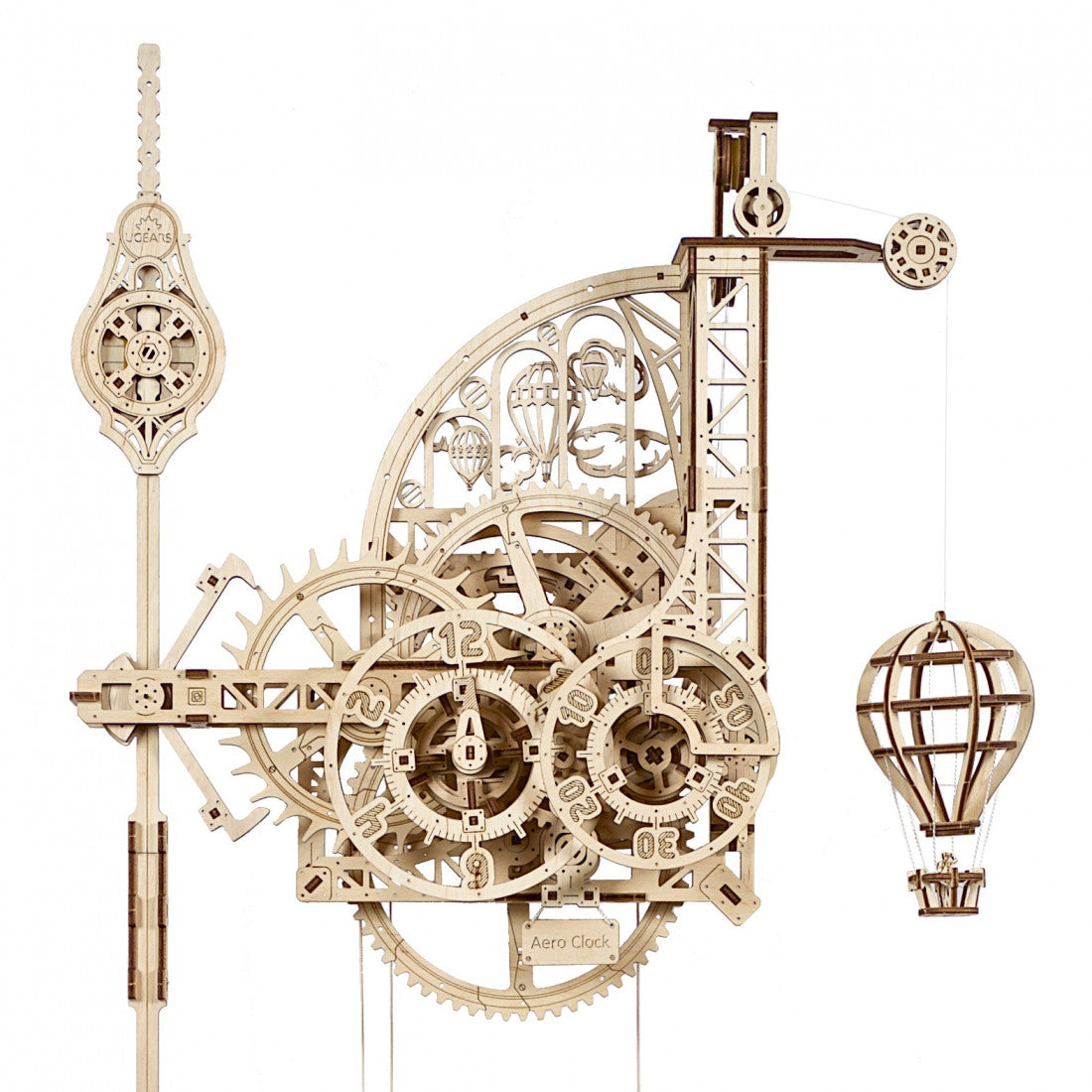
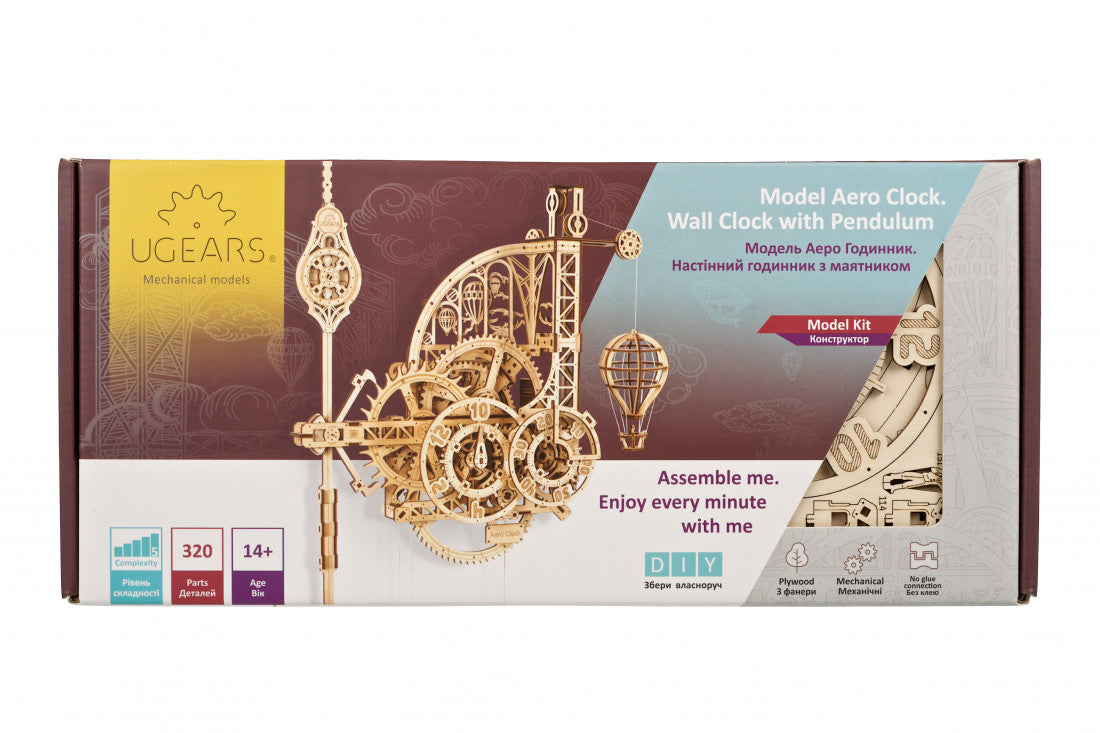
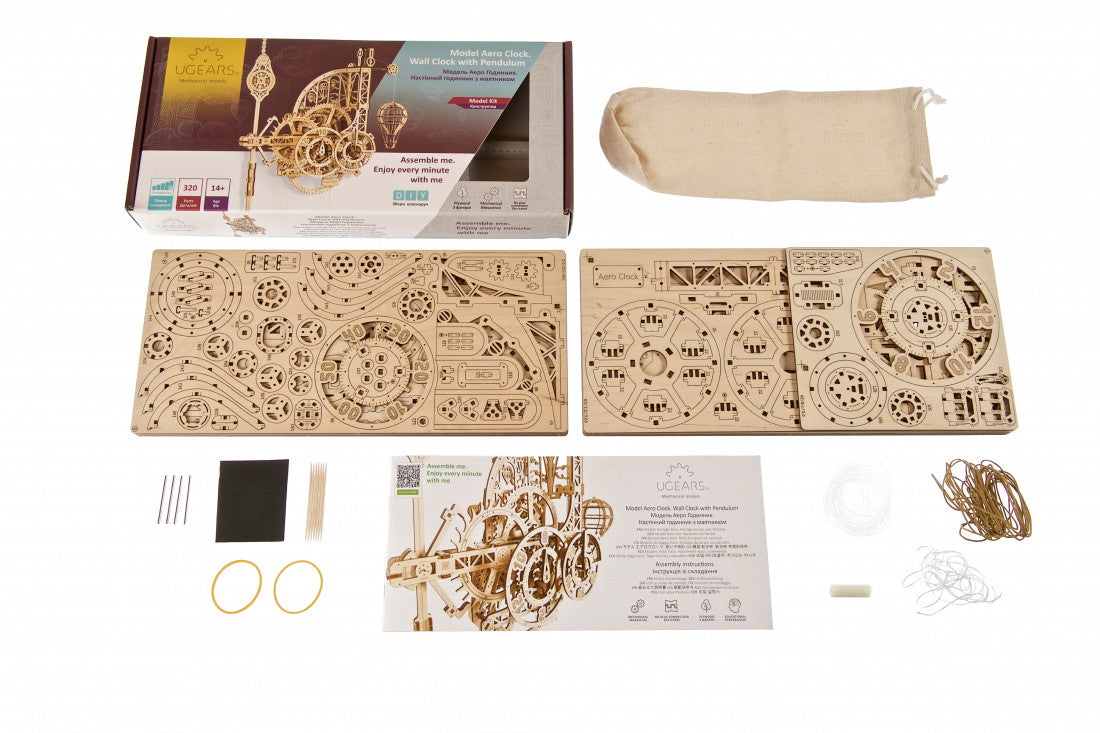
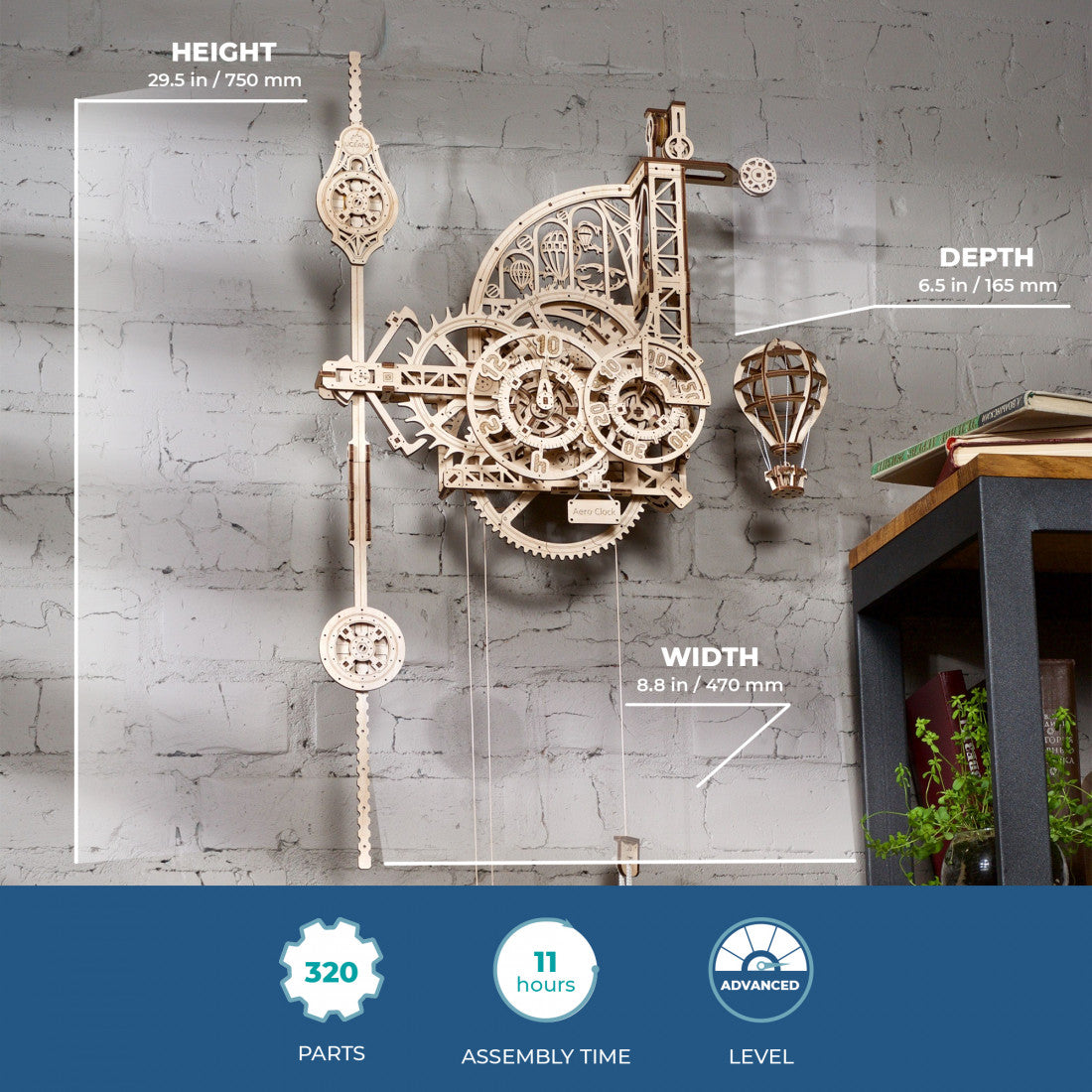
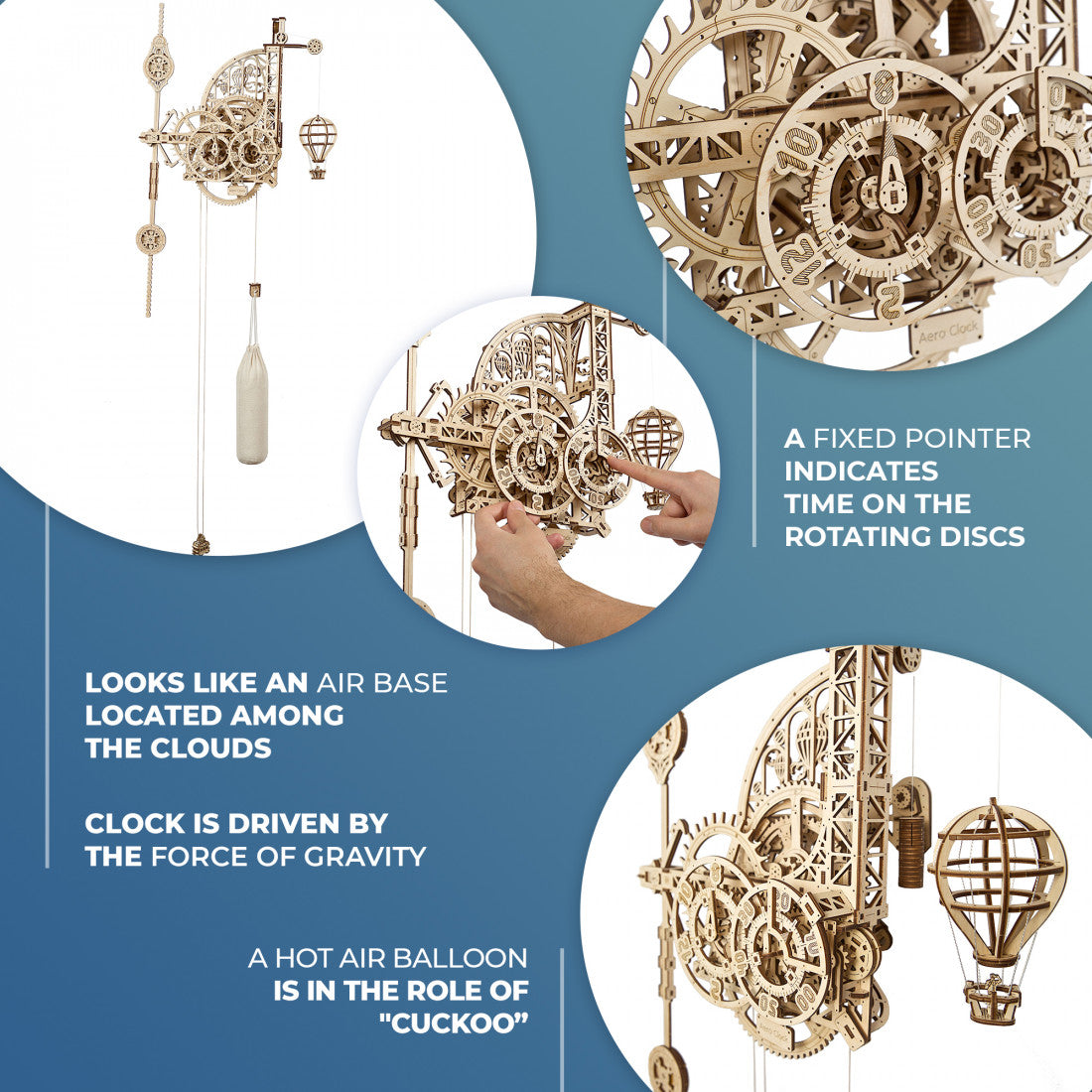
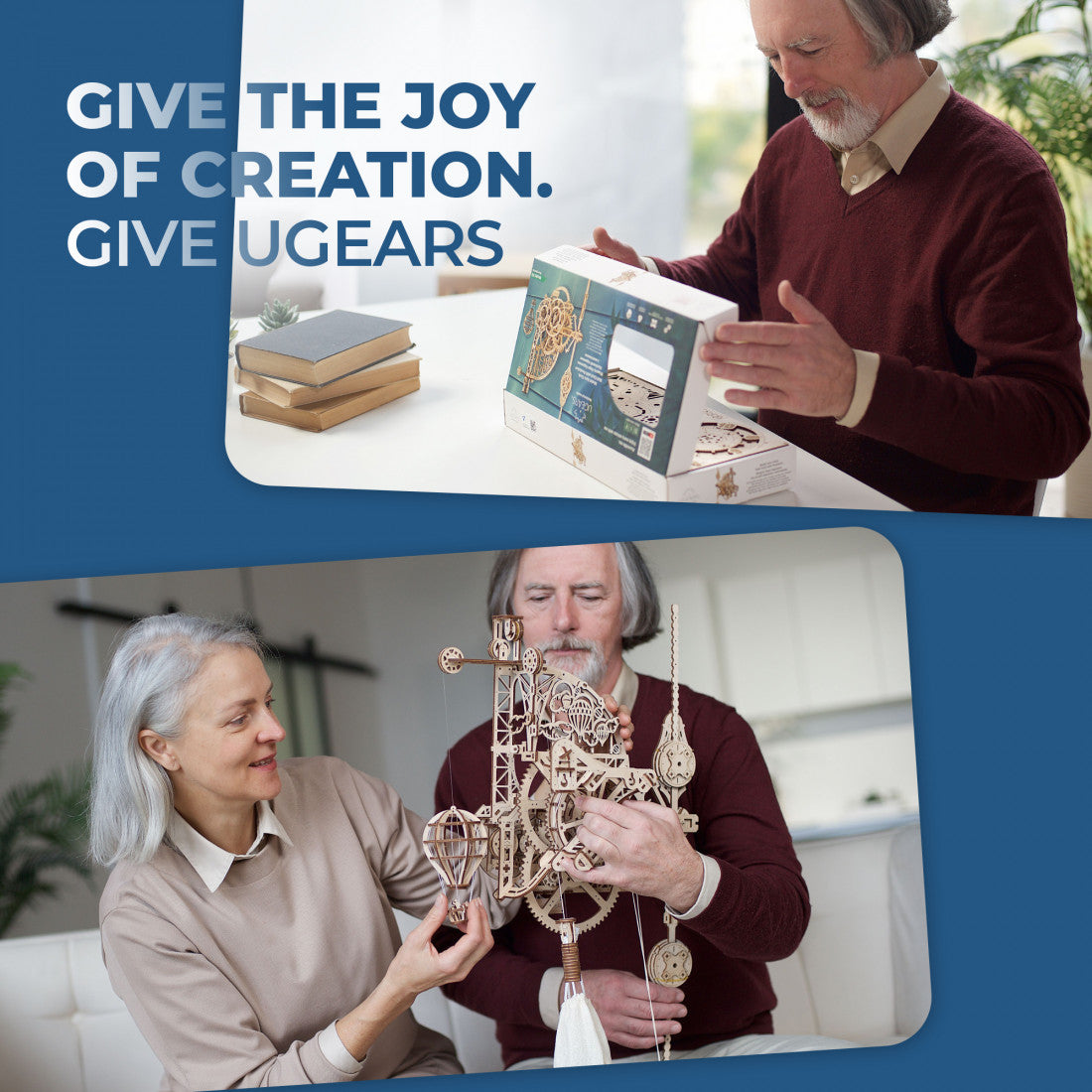

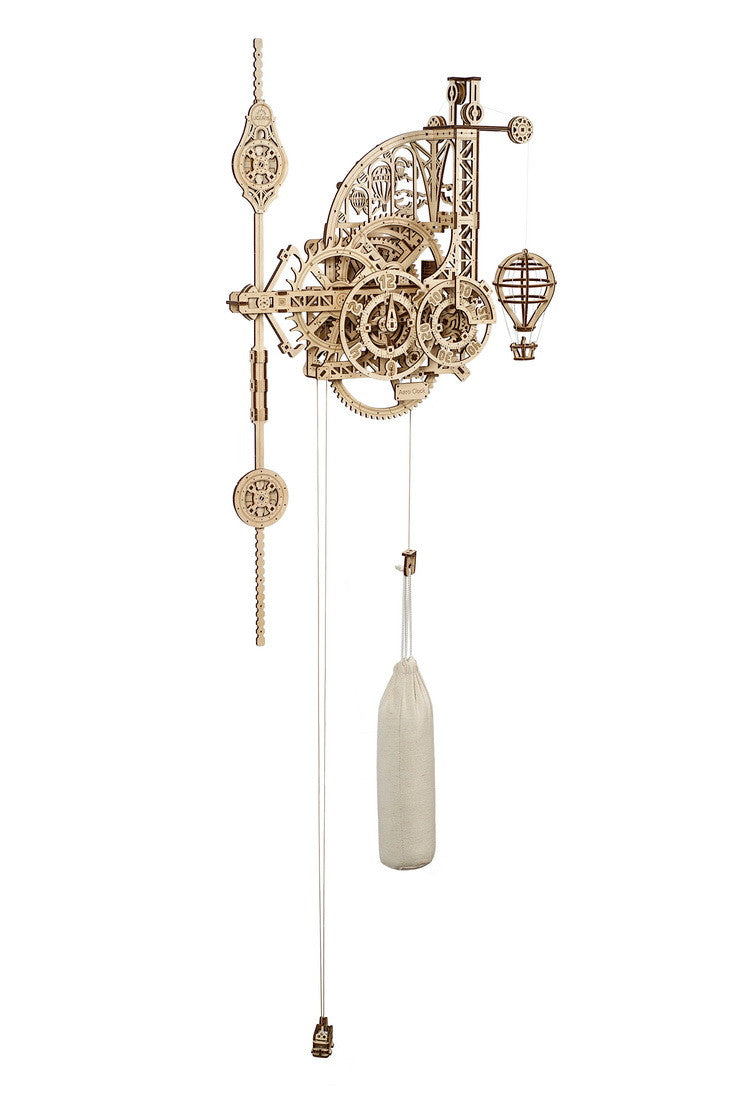
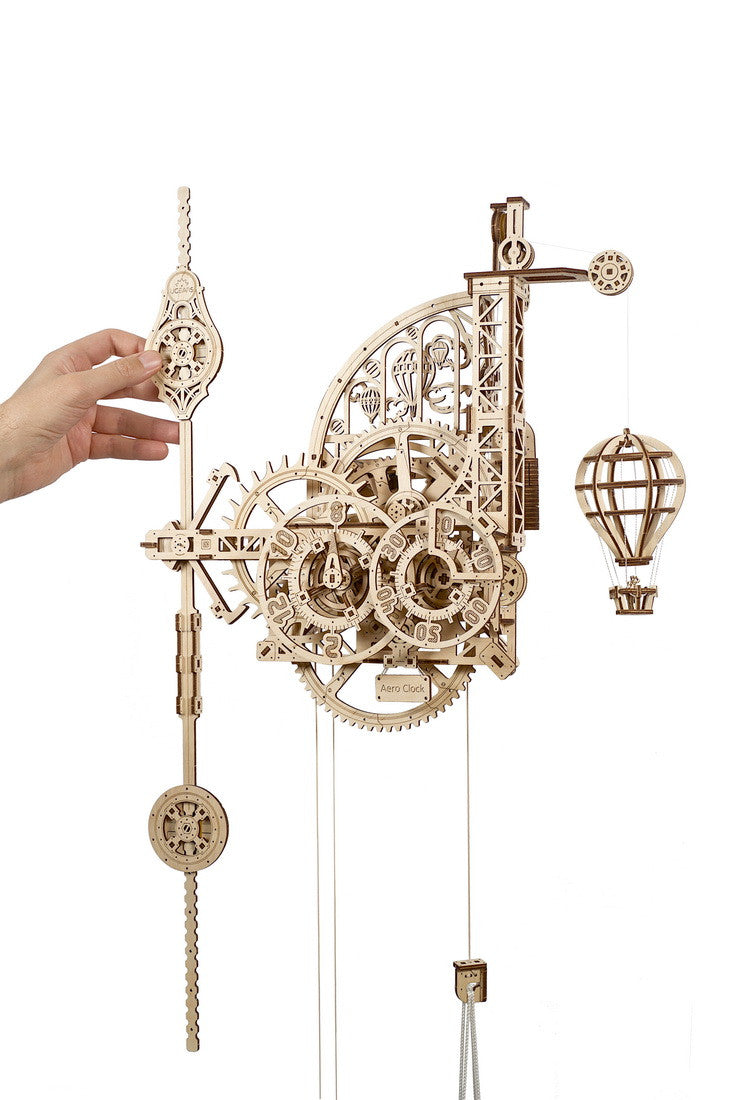
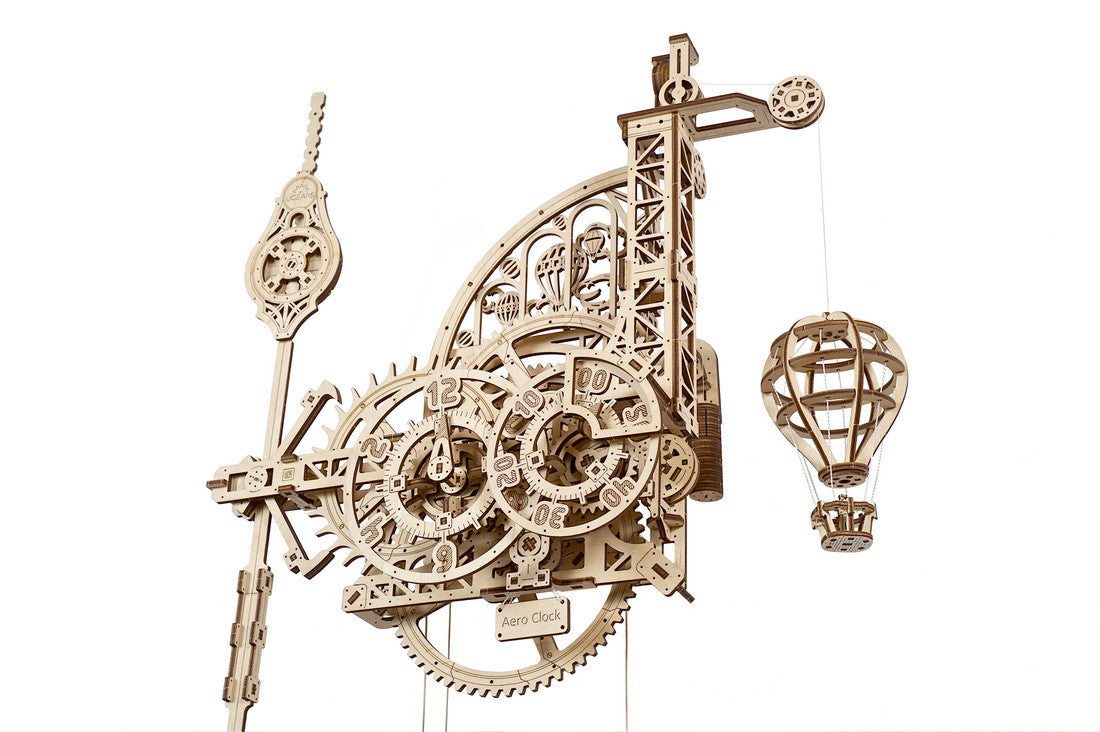


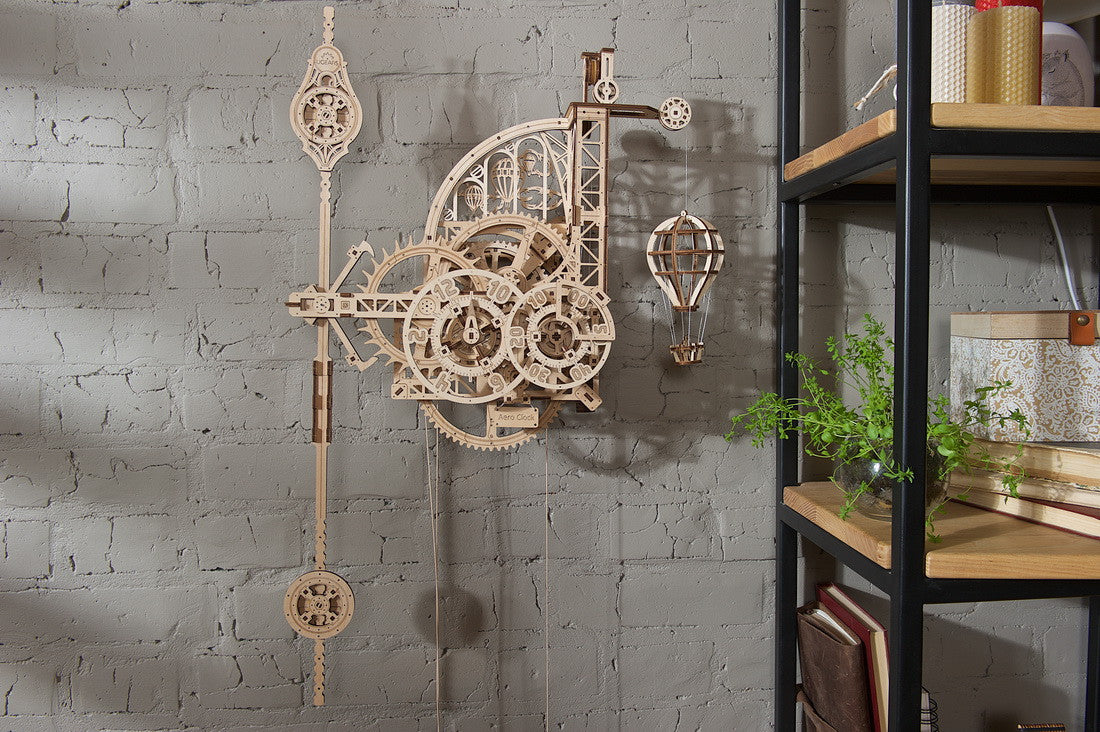

Promotions & news
Subscribe to our mailing list to receive promotions and new arrivals. Find the link at the end of this page or just tick the "Send me email with news and offers" box at checkout.












